Know Your Lore: Highborne, High Elves and their history
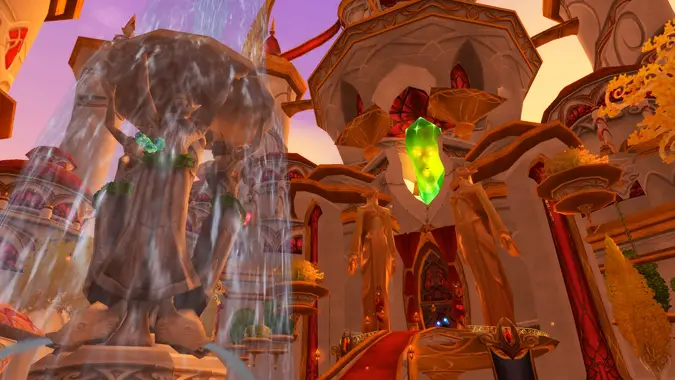
They are a vanishing people. Once they ruled much of the northern Eastern Kingdoms from their seat of power, the ancient and glorious city of Silvermoon, in the heart of Quel’Thalas. But then came Arthas and his armies of undead, the Scourge he wielded to flay the forest bare and leave a miles long scar right through the heart of the ancient forest. Silvermoon was bisected, the island of Quel’Danas invaded, and the Sunwell destroyed. In the aftermath of this horrific moment when so many of their heroes and defenders died and their very way of life was threatened forever, the majority of the survivors became something else, naming themselves Sin’dorei — Blood Elves — in memory of the devastation they’d suffered.
But not all of the High Elves would let their name, their very selves, be changed by what they’d endured. They’d been the Quel’dorei since before they even existed as a distinct people. The name reached back ten thousand years to the Sundering and beyond, to the time when all elves were one people. Before Queen Azshara brought the Legion down on her own subjects, before some of their number served her in her mad ambition to destroy her own subjects, the Quel’dorei were nobles, lords and ladies, master mages and above all else, they were Children of Noble Birth.
Who were the High Elves? And what’s become of them?
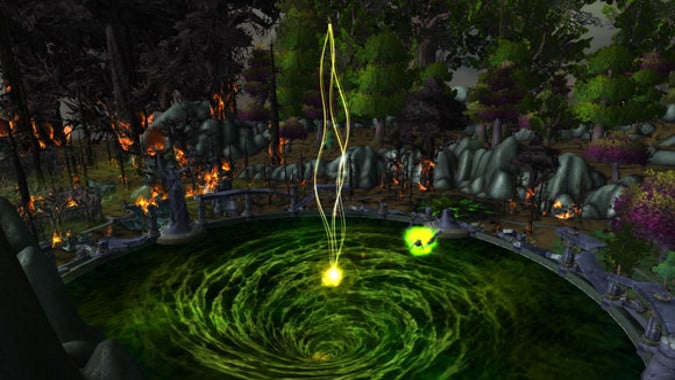
Children of Noble Birth
Before the Sundering, there was the Kal’dorei Empire. This vast nation was literally carved by the first true Night Elves out of the lands of the Amani and Gurbashi Trolls, themselves slowly recovering from a series of wars with the ancient Aqir.When the Night Elves arose, evolved from their ancient Dark Troll ancestors by the power of the Well of Eternity, their culture shaped by the discovery of Titan Relics on the shores of said Well, they used powerful new Arcane magics to utterly crush both nations of Trolls and take for themselves mastery of Kalimdor. Thus they founded the largest empire to rise on the continent since the Black Empire of the Old Gods in the primordial past.
Before the coming of Azshara, there was Elun’dris, the Eye of Elune, a city on the banks of the Well of Eternity. And in that city, and many others throughout the Empire, the Highborne reigned. These members of Kal’dorei society saw themselves as the natural leaders of it — gifted in sorcery, intelligent and powerful, they came to call themselves by the name Quel’dorei, meaning ‘Children of Noble Birth’ in order to distinguish themselves from those lower than themselves on the social order.
Over the thousands of years of the Empire’s existence, there began to be a synonymous change in the Quel’dorei — since they saw sorcery as inherent to greatness, almost all of them pursued it. To be Highborne came to mean to be magically proficient as well as born to rule, and when Queen Azshara was born and acclaimed as the destined leader of their people the Highborne looked to her as a model for what a Highborne should be — profoundly beautiful, terrifyingly intelligent, utterly skilled with magic and other forms of power.
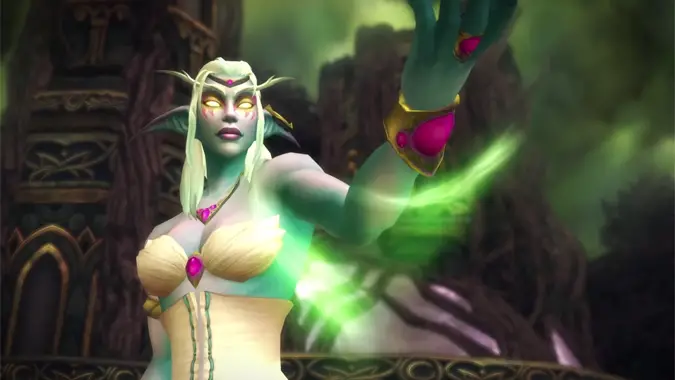
Azshara’s rule lasted thousands of years. The Highborne came to be her bulwark against her own people — she never really had to see them or know much about how they lived. Instead, she was surrounded by Quel’dorei who did everything in their power to reflect her glory, going so far as to rename Elun’dris itself to Zin-Ashari, The Glory of Ashara.
The Highborne failed to emulate their Queen in one respect. The common Kal’dorei who loved Azshara for her beauty, grace, intelligence and clear power with magic did not love the Quel’dorei, who they saw as arrogant, haughty, and sneeringly self-satisfied with themselves. Azshara was the Queen, beloved by almost all of her people, but the courtiers and hangers-on who surrounded her were not remotely as well thought of by those who they in turn viewed as lessers.
It’s important to note that not all of the Night Elf ‘nobles’ of that era considered themselves Quel’dorei — for example Lord Kurtalos Ravencrest, hereditary holder of Black Rook Hold (a massive fortification carved out of a mountain in the general area of Suramar, in what is today western Val’Sharah) did not count himself as one of the Highborne, despite being a descendant of an old and long established nobility.
The Highborne were a self-proclaimed group, many of them not part of that older strain of land holders and servants to the Empire. Likewise, not all sorcerers were Highborne — the talent was widespread in Night Elf society at the time, and there were groups such as the Moon Guard who were just as puissant with the Arcane as they were. The Highborne were an outgrowth of older groups, and they came to be utterly dependent on the Queen and her will.
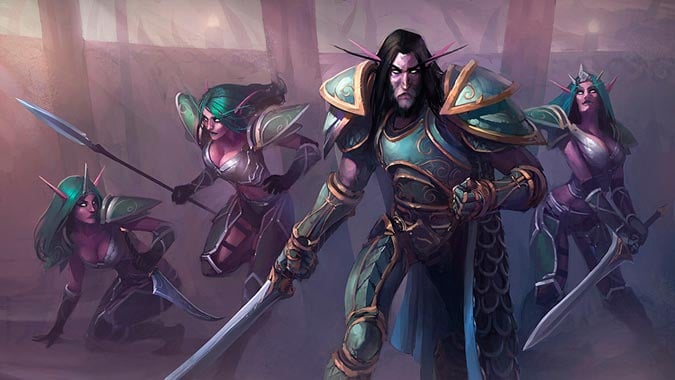
The End of the Empire
Even so, the Quel’dorei were not all drones mindlessly loyal to the Queen. The Empire was ruled by many self styled Princes and Princesses and these all had their own levels of autonomy. Some, like Prince Farondis, would ultimately rebel against Azshara and pay the price. Others, like Elisande, would managed to defy her and survive for various reasons.
One Highborne, Dath’Remar Sunstrider, even joined forces with the Kal’dorei Resistance and opposed Azshara, Xavius and the Highborne loyal to her, and after the Sundering, Dath’Remar was the leader of the largest group of Highborne left. The Shen’dralar were in distant Feralas, protected by their Prince Tortheldrin’s magics in a kind of exile, Elisande and Suramar were lost as far as Dath’remar knew, Farondis and others were dead. So as Dath’Remar saw it, it was his task to defend the high culture and sophistication of the Quel’dorei, and that meant preserving their traditions. One of those traditions was the use of arcane magic.
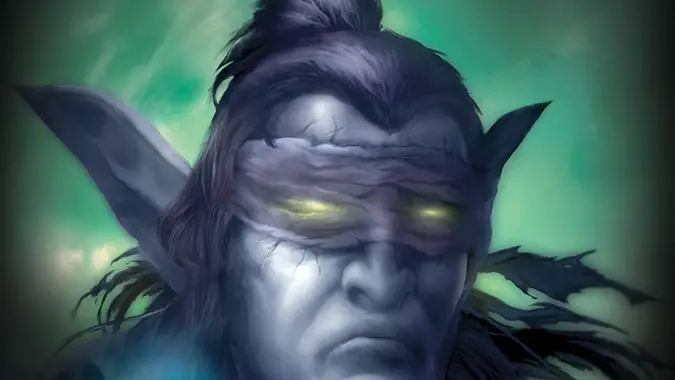
But following the Sundering, the survivors of the Kal’dorei Resistance were in charge of where Kal’dorei culture would go, and these were led by Druids and Priests that had seen quite enough of the Quel’dorei’s reckless sorceries. In their view the Arcane was directly responsible for the armies of demons that had killed so many of their people. It was now a crime punishable by death.
Save for a few holdouts in the distant Broken Isles who were too few and too far away to really matter, the Moon Guard agreed to disband and many of them took up Druidic magic under Malfurion’s teachings. The Priesthood of Elune took over leadership of Night Elf culture, and even though Illidan Stormrage saved the waters of the Well of Eternity and made a new one atop Mount Hyjal, it quickly became apparent to Dath’Remar that the age of Kal’dorei high magic was over. He and his Quel’dorei supporters could assimilate themselves into Kal’dorei culture (a culture they saw abandoning everything they viewed as special about themselves) or… not.
At first they tried, but cut off from access to the mystical power of the Well, the Quel’dorei were suffering. Eventually Dath’remar grew tired of talking. He and his supporters decided a demonstration of the superiority of arcane magic was in store, and so they provided one — a vast magical storm that blanketed most of the new Kalimdor. He and his fellow Highborne were exiled by their lesser-caste brethren for this, and for their stubborn refusal to abandoned the arcane.
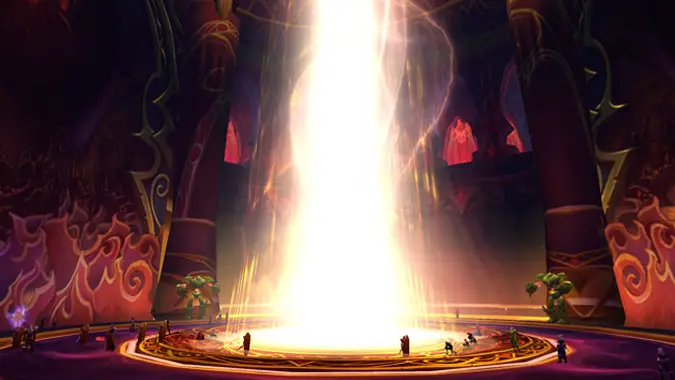
The Sunwell Ignites
By this point, Dath’remar and his supporters were just as relieved to be sent away as the Kal’dorei were to exile them. In their view, refusal to use the power of the Well of Eternity was foolish — you couldn’t combat the Legion and its inevitable return by remaining willfully ignorant of the tools needed to fight them. They sailed across the new ocean that covered much of what was once central Kalimdor, lands they themselves had once ruled, until they landed in what is now called Tirisfal Glades.
Unbeknownst to them. these lands were the burial place of Tyr, one of the Keepers of Ulduar and a Titan-Forged Watcher. However, they were also the tomb of the dread Zakajz, a dreadful servant of the Old Gods, and that slumbering monstrosity haunted the land around it. The bedraggled survivors of the Highborne soon found themselves burdened with horrific dreams and decided Tirisfal was no place for them. They were also wracked with pains as they went longer and longer without a font of arcane power like the original Well of Eternity, or its replacement atop Mount Hyjal.
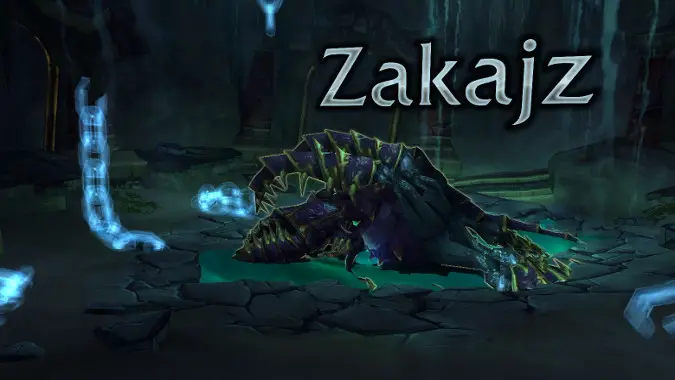
Dath’remar led them north and found on an island a site that he felt would serve their needs. Yes, the surrounding forests were the home of the Amani Trolls, who’d once waged war with their Kal’dorei ancestors. Dath’remar and his people viewed this as a minor problem at best. What was a more pressing concern, in his view, was the addiction to the arcane that was tearing his people apart. They’d lost their connection to the new Well of Eternity that Illidan had created, but they had a vial of the water of the original Well, and they intended to use it.
On Quel’Danas Isle they created the Sunwell, a magical font to soothe their addiction and symbolize their break with the old — the old culture of the Kal’dorei Empire and the new culture arising led by the Priests of Elune. In their view, if the night had rejected them, and their ways were no longer to the those of the Children of the Stars, then let them embrace the day as Children of Noble Birth. The Highborne no longer, now they were High Elves, walkers in the sunlight.
But this wasn’t the end of their story, nor was it all the Highborne who followed Dath’Remar to the Eastern Kingdoms. Next time we’ll look at the Shen’dralar and the history of Quel’Thalas, and its ultimate fate.
Please consider supporting our Patreon!
Join the Discussion
Blizzard Watch is a safe space for all readers. By leaving comments on this site you agree to follow our commenting and community guidelines.
 @MatthewWRossi
@MatthewWRossi



